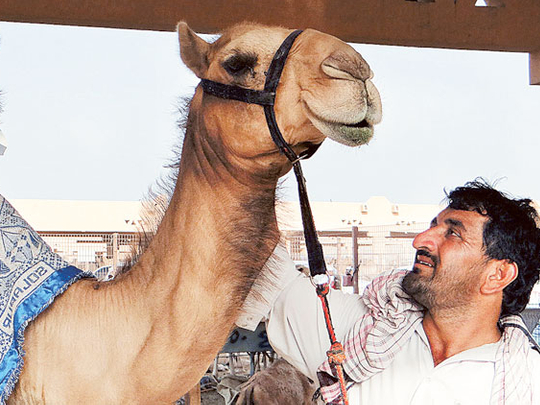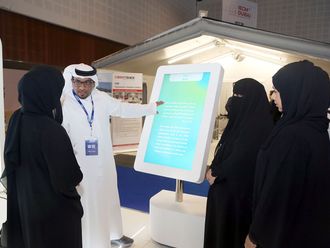
Al Ain: Camels are a crucial part of Emirati culture. They are also the symbol of the Arabian Gulf region with centuries’ old lasting imprints on the Bedouin culture, traditions, social life and history.
The Dubai Government is playing an important role in producing the best-quality camels through the Camel Reproduction Centre (CRC). The CRC, founded in 1989, was the first institution in the world to clone a camel in 2009. That camel was named Injaz. The CRC is supported by His Highness Shaikh Mohammad Bin Rashid Al Maktoum, Vice-President and Prime Minister of the UAE and Ruler of Dubai.
Scientists at the centre created a cloned camel last year.
“It was a beauty and accordingly given the name of Sooty due to is black colour,” said Ahmad Al Shamsi, an Emirati at Al Ain Camel Market.
The UAE also has a number of hospitals and clinics for the treatment of sick and injured camels. Under the instructions of Shaikh Mohammad, Dubai Camel Hospital was established in 1990. Similarly, a veterinary hospital in Abu Dhabi is the official medical service for camels.
The animal has enjoyed a harmonious relationship with Arab Bedouins since the times of nomadic husbandry.
“Our forefathers regarded camels as a gift from Allah and we still believe in this,” said Ebrahim Saleh Al Nuaimi, an Emirati.
The animal, he said, still holds great value for Emiratis, they are always proud of the number of camels they possess.
“Camels keep us connected with our rich past,” he said, adding that owning camels is a highly emotional thing for Emiratis.
Al Nuaimi said that camels are still an important source of meat and milk and a means of sporting activities. Camel racing is a major traditional sport in the UAE and other GCC countries.
“In the olden days our forefathers use to organise camel races on festive occasions and wedding ceremonies,” he said.
It has now become a popular sport. The camel racing season starts from October and ends in April.
Racing camels are more expensive than the camels used for meat and milk.
“We love this centuries-old friend and its loyalty,” he added.
Al Nuaimi also praised the UAE authorities for taking measures for the protection and promotion of the traditional Emirati lifestyle.
Al Shamsi said Arabs assign a different name to camels every year after birth.
“It is our custom through which we also identify the age of the camels,” he said.
A one-year old camel is called Hewar and a two-year old is known as Fateem, he said.
When it becomes three years old its name is changed to Haj, over the following years they are called Liggi (four years), Yethea (five years) and Thani (six years.) A six-year-old male camel is also called Baeer, while a female is given the name of Nagah, said Al Shamsi.
He said there are different types of Arabian camels. In the UAE, he said, Shtoota, Misk, and Dhabian camels are considered among the best.









